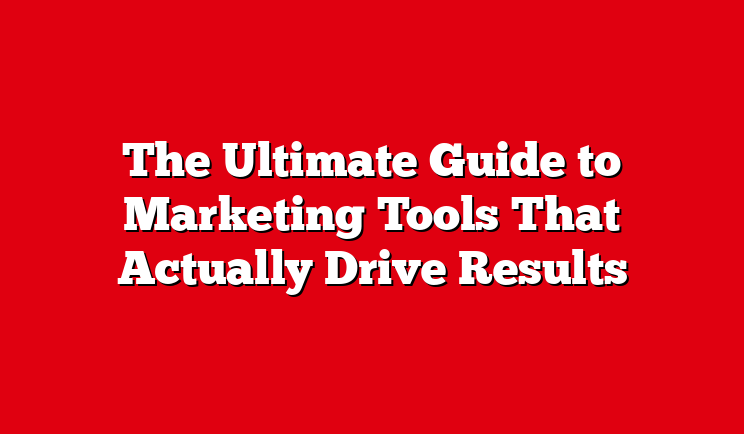Influencer Marketing: What It Is and How to Master It
Influencer marketing has evolved from celebrity endorsements to collaborations with social media personalities, democratizing influence and allowing niche creators to become powerful brand advocates. Today, it’s a strategic approach for brands to authentically connect with consumers through trusted voices.
Key Takeaways
- Influencer marketing has evolved from celebrity endorsements to social media influencers, offering authentic connections with audiences.
- Understanding different influencer types (mega to nano) is key for effective partnerships.
- Avoid common mistakes like unclear goals, focusing solely on follower count, and neglecting influencer research.
- Develop a strategy by setting clear goals, defining your audience, and crafting a compelling message.
- Track campaign performance using branded hashtags, tracking links, and social media analytics tools.
- Influencer marketing offers benefits beyond sales, including brand awareness and audience expansion.
- Brands should prioritize trust and authenticity in influencer partnerships for long-term success.
Understanding Influencer Marketing
Influencer marketing is a form of collaboration between brands and individuals with a dedicated social following. Influencers, often experts in their niche, leverage their credibility to endorse products or services to their audience. Unlike traditional advertising, influencer marketing thrives on the authenticity of these endorsements, as followers trust the recommendations of influencers they admire. This form of marketing has become increasingly popular due to its ability to reach specific demographics and engage audiences in a more genuine way.
Successful influencer marketing campaigns focus on building relationships and creating content that resonates with the influencer’s audience. By aligning with influencers whose values and interests match those of the brand, companies can create impactful campaigns that drive engagement and increase brand awareness. Trust and authenticity are at the core of influencer marketing, making it a valuable tool for brands looking to connect with consumers in a meaningful way.
Types of Influencers
Influencers come in various categories based on the size of their following and the level of influence they wield. Understanding these categories is crucial for brands to choose the right influencers for their campaigns.
Mega Influencers:
Mega influencers are typically celebrities or well-known personalities with millions of followers. While they offer unparalleled reach and visibility, their engagement rates may be lower due to the broad nature of their audience. Brands like large corporations or luxury brands often benefit from partnering with mega influencers to create massive brand awareness campaigns.
Macro Influencers:
Macro influencers have a following that ranges from 100,000 to 1 million. They are considered experts in their niche and have a more engaged audience compared to mega influencers. Brands looking for a more targeted approach and seeking credibility often collaborate with macro influencers. Examples include startups, nonprofit organizations, or businesses targeting a specific but sizable audience.
Micro Influencers:
Micro influencers have a following of 10,000 to 100,000 followers. They are known for their high engagement rates and niche audience. Micro influencers are cost-effective for brands and can drive significant conversions. Many startups and small businesses leverage micro influencers for their authenticity and ability to connect with a specific audience.
Nano Influencers:
Nano influencers have fewer than 10,000 followers but often have the most engaged and loyal audience. They are highly effective for targeting specific communities or demographics. Brands looking for authentic connections and personalized campaigns often partner with nano influencers. Examples include local businesses, small businesses with limited budgets, or niche product brands.
Why Use Influencer Marketing?
Influencer marketing has become a cornerstone of modern advertising strategies, thanks to its proven effectiveness and ability to reach specific target demographics. According to Influencer Marketing Hub, the industry reached $16.4 billion in 2022 and is expected to grow to $21.1 billion in 2023, highlighting its rapid expansion and popularity among marketers.
One of the key reasons to use influencer marketing is its ability to access niche audiences that may be difficult to reach through traditional advertising channels. Influencers have cultivated dedicated communities around their content, making them trusted sources of information and recommendations for their followers.
Moreover, influencer marketing offers benefits beyond immediate sales. It can significantly boost brand awareness, drive website traffic, and even help in audience expansion. By partnering with influencers, brands can tap into the authenticity and credibility these influencers have built with their audience, leading to higher engagement and conversion rates.
Common Mistakes in Influencer Marketing
Influencer marketing can be a powerful tool for brands, but it’s essential to avoid common pitfalls that can hinder its effectiveness. One of the most prevalent mistakes is failing to define clear goals and key performance indicators (KPIs) for your influencer campaigns. Without clear objectives, it’s challenging to measure the success of your efforts and optimize future campaigns.
Another mistake is prioritizing follower count over engagement. While influencers with a large following may seem appealing, their engagement rates may be lower than those with a smaller, more engaged audience. It’s important to consider factors like engagement rate, audience demographics, and relevance to your brand when selecting influencers.
Neglecting influencer research and authenticity is another common mistake. It’s crucial to thoroughly vet influencers to ensure they align with your brand values and have an authentic connection with their audience. This can help prevent potential backlash from audiences who can quickly spot inauthentic partnerships.
Writing poorly constructed briefs can also hinder the success of your influencer campaigns. A clear and concise brief helps ensure that influencers understand your campaign objectives and deliver content that aligns with your brand’s messaging.
Restricting the influencer’s creative freedom is another mistake to avoid. While it’s essential to provide guidelines, overly controlling the content can make it appear scripted and inauthentic. Trusting influencers to create content that resonates with their audience can lead to more authentic and engaging campaigns.
Finally, not setting expectations upfront can lead to misunderstandings and unmet expectations. It’s essential to establish clear timelines, deliverables, and payment terms with influencers to ensure a successful partnership.
How to Develop an Effective Influencer Marketing Strategy
Developing an effective influencer marketing strategy requires careful planning and execution. Here are key steps to create a successful campaign:
- Find and Select Influencers: Begin by identifying influencers who align with your brand values and target audience. Consider factors such as their follower demographics, engagement rate, and content quality. Use influencer marketing platforms or agencies to streamline the selection process.
- Set a Budget and Management Strategy: Determine your budget based on the type and number of influencers you plan to work with. Consider additional costs such as content creation, influencer fees, and tracking tools. Establish a management strategy to track influencer performance, content delivery, and campaign timelines.
- Establish Campaign Goals and Messaging: Clearly define your campaign goals, whether it’s to increase brand awareness, drive sales, or promote a new product. Develop a cohesive messaging strategy that resonates with both the influencer’s audience and your brand’s values.
- Influencer Outreach and Communication: Reach out to selected influencers with a personalized pitch outlining your campaign goals, expectations, and compensation. Maintain open communication throughout the collaboration to ensure alignment and transparency.
- Review and Refine the Strategy: Continuously monitor and evaluate your influencer marketing campaign’s performance against predefined KPIs. Gather feedback from influencers and analyze metrics such as engagement, reach, and ROI. Use this data to refine your strategy for future campaigns and optimize results.
Tracking Influencer Marketing Campaigns
Tracking the success of your influencer marketing campaigns is crucial for measuring ROI and optimizing future strategies. Here are some effective tracking methods:
- Branded Hashtags and Tracking Links: Create unique hashtags and tracking links for each influencer campaign. This allows you to easily monitor and attribute campaign-related engagement and conversions.
- Social Media Analytics Tools: Utilize social media analytics tools from leading software companies to track key metrics such as reach, engagement, and impressions. Platforms like Sprout Social, Hootsuite, and Buffer offer comprehensive analytics for monitoring campaign performance.
- Measuring Success Metrics: Evaluate the impact of your influencer campaigns based on predetermined KPIs. Monitor metrics such as likes, comments, shares, website traffic, and sales to gauge campaign effectiveness.
Conclusion
Influencer marketing has become a powerful tool for brands to connect with their target audience and drive engagement. By leveraging the influence and authenticity of social media influencers, brands can amplify their reach and impact in the digital landscape. As influencer marketing continues to evolve, it is essential for brands to stay informed and adapt their strategies to meet the changing landscape. Investing in influencer marketing can yield significant returns for brands looking to enhance their online presence and drive growth in the competitive digital marketplace.











